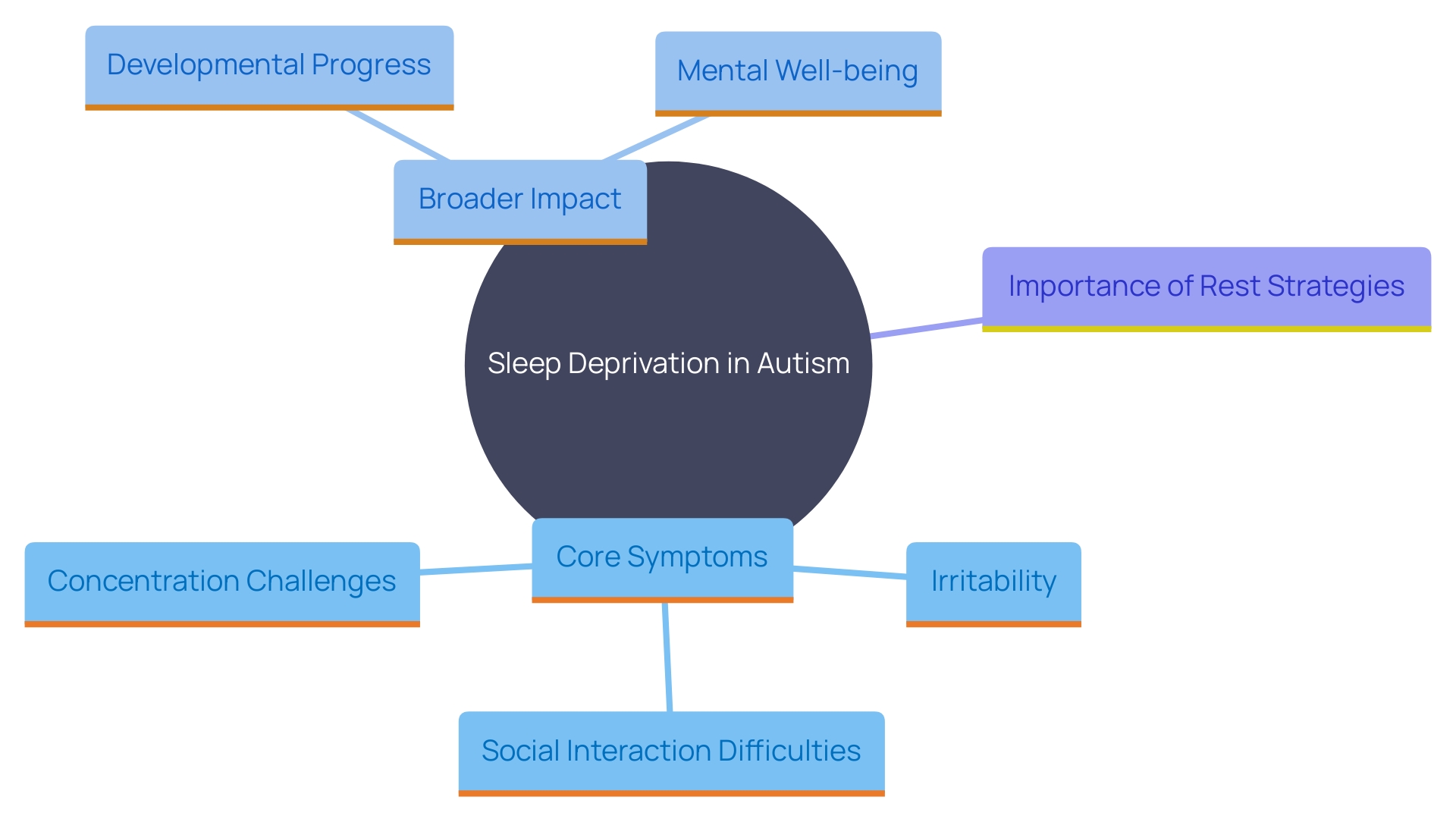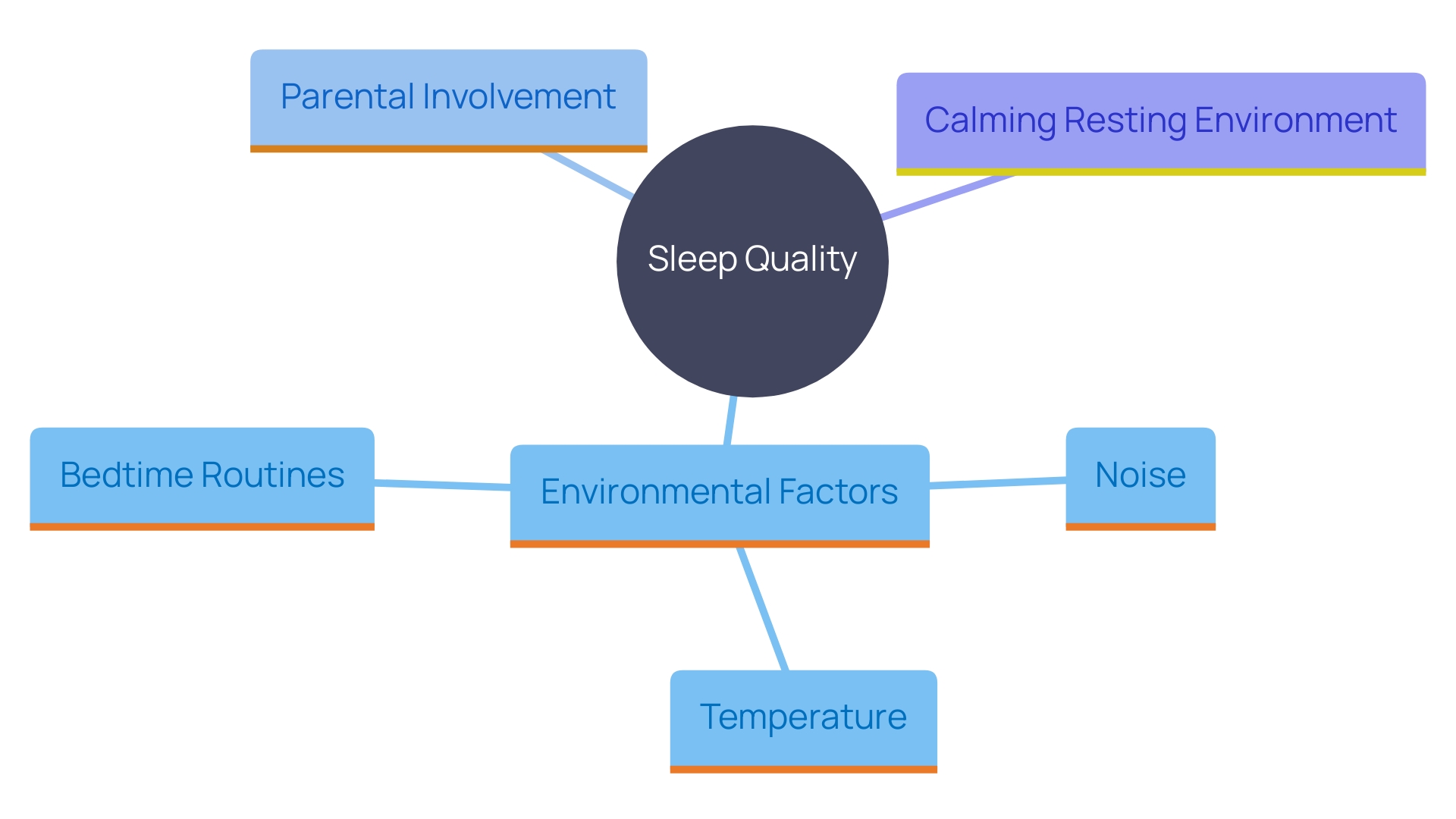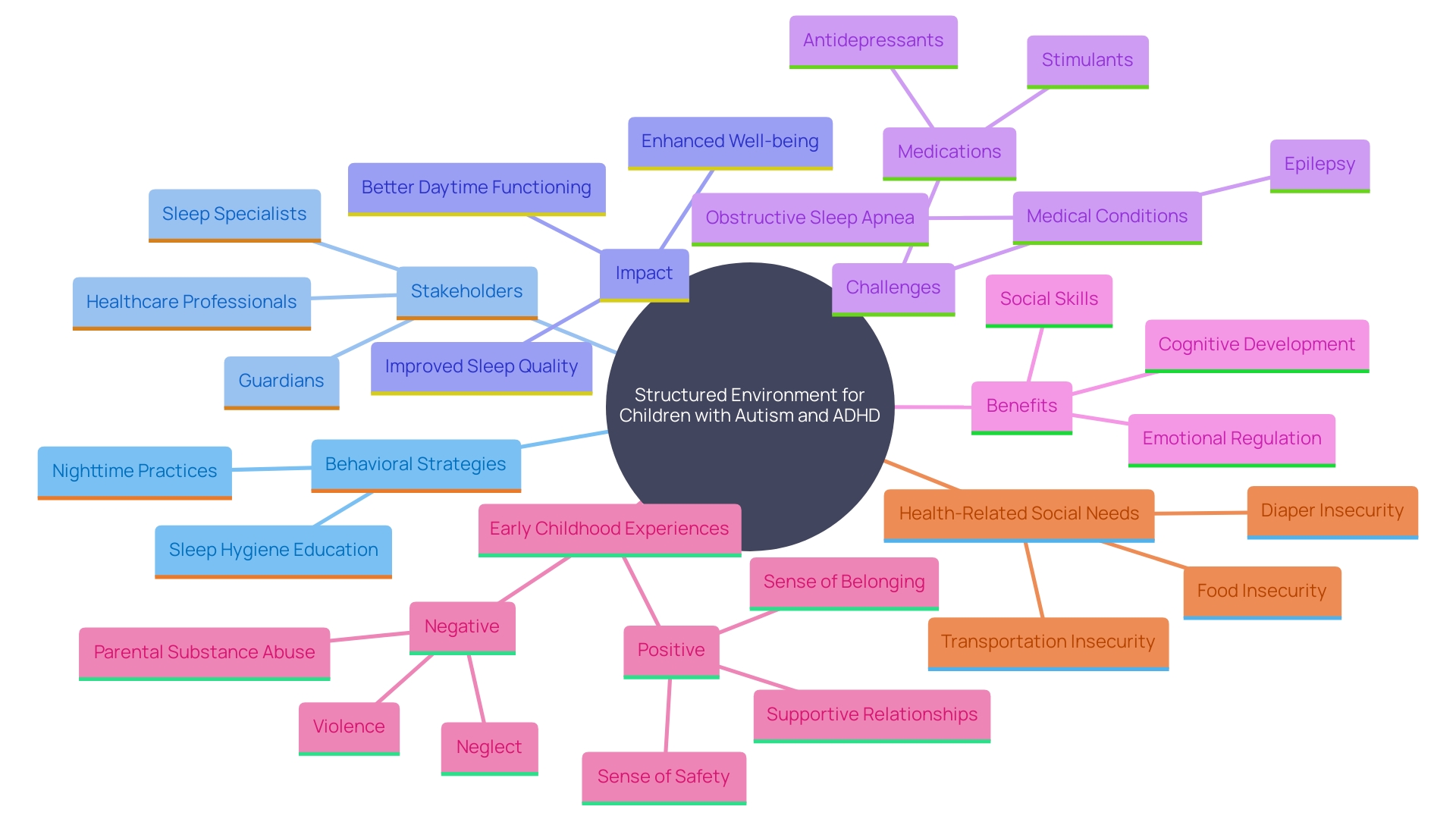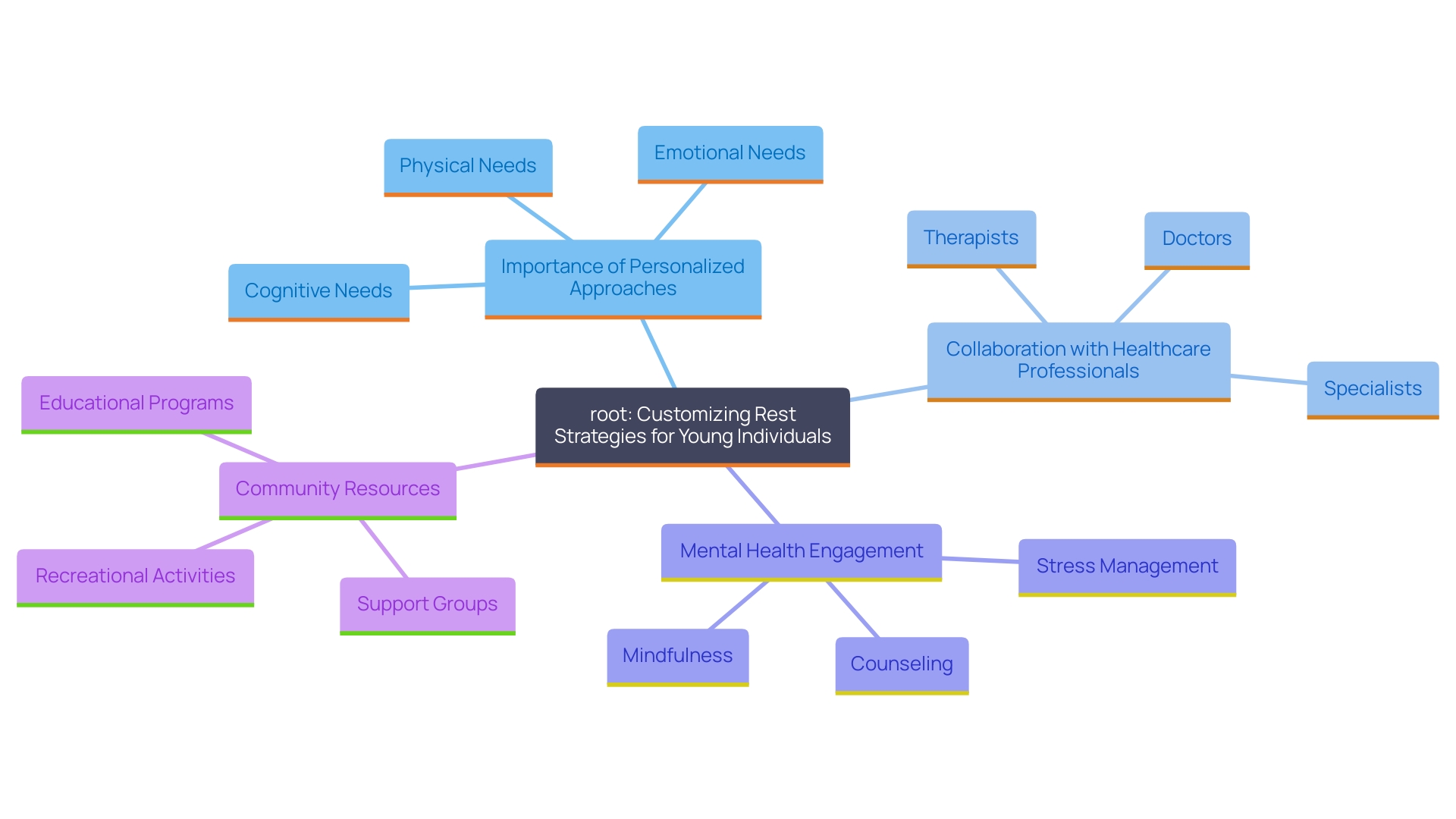Introduction
Navigating the complexities of sleep issues in children with Autism Spectrum Disorder (ASD) can be daunting, but understanding the prevalence and impact of these challenges is the first step toward effective management. Up to 80% of children with ASD experience disturbances such as difficulty falling asleep, frequent awakenings, and early morning risings, significantly affecting their daily lives and overall development. Recognizing both intrinsic factors, like sensory sensitivities and anxiety, and extrinsic factors, such as environmental stimuli, is crucial in identifying and addressing specific sleep disruptions.
This article delves into the multifaceted causes of sleep problems in children with ASD and offers comprehensive strategies, from environmental modifications to pharmacological interventions, empowering parents to cultivate a supportive and restful sleep environment for their children.
Prevalence and Types of Sleep Problems in ASD
Sleep issues are notably prevalent among youngsters with Autism Spectrum Disorder (ASD), with research indicating that up to 80% of these individuals encounter sleep disturbances. These challenges often present as difficulties in falling asleep, frequent nighttime awakenings, or early morning risings. Addressing these issues is crucial, as well-supported participation in daily activities is a cornerstone of mental health for young individuals with disabilities. As Dr. David (Dan) R. Offord highlighted, ensuring equitable support for these young individuals is vital for their healthy development and well-being. Identifying the particular kinds of rest issues your offspring encounters can enable you to pursue focused solutions, nurturing a more tranquil and encouraging atmosphere for your young one's development.

Impact of Sleep Problems on ASD Symptoms and Daily Life
Sleep deprivation can significantly worsen the core symptoms of autism, such as heightened irritability, difficulties in social interactions, and challenges with concentration. The impact of poor sleep extends beyond behavior, potentially hindering overall developmental progress. Studies affirm that a good night's rest is essential for the mental and emotional well-being of young individuals, including those on the autism spectrum. As Dr. David R. Offord emphasized, ensuring equitable support and participation in daily activities is crucial for their mental health and development. Acknowledging the strong link between rest and behavior can motivate parents to focus on rest strategies, understanding that enhanced rest can result in better daily functioning and a more inclusive experience for their offspring.

Intrinsic Causes of Sleep Problems in ASD
Numerous inherent elements play a role in rest problems among youth with autism and ADHD. Sensory sensitivities, which can make ordinary stimuli overwhelming, often play a significant role. Anxiety, another prevalent concern, can increase stress levels, making it challenging for young ones to unwind and drift off. Moreover, disturbances in circadian rhythms can result in irregular rest patterns. Understanding these internal factors allows parents to pinpoint specific triggers influencing their offspring's rest. This understanding enables more focused strategies, such as creating a sensory-friendly sleep environment or establishing a calming bedtime routine, to enhance better sleep outcomes.
According to a study conducted at The Center for Discovery, large datasets spanning over a decade have revealed critical insights into predicting and mitigating behaviors in youth with autism. This kind of research underscores the importance of understanding and addressing sensory experiences, as highlighted by experts like Jennie, a trauma-focused CBT therapist, who emphasizes the value of psychological wellness and accurate information in treatment.
Dr. David (Dan) R. Offord, a prominent pediatric psychiatrist, emphasized the significance of diminishing ongoing sources of pressure and ensuring caregivers possess the essential resources to foster their offspring’s healthy growth. By tackling these inherent factors, parents can more effectively assist their offspring's rest quality and general health.
Extrinsic Causes of Sleep Problems in ASD
Environmental factors such as noise, temperature, and bedtime routines play a crucial role in the quality of rest for youngsters, particularly for those with autism and ADHD. Establishing a calm, consistent bedtime environment can significantly reduce these disturbances. Recent research, including a study from The Center for Discovery, highlights the importance of addressing these external factors to predict and mitigate sleep-related behaviors. By evaluating and adjusting their offspring's rest environment, parents can promote a more peaceful night, improving overall health. Active and tranquil involvement in home and recreational activities is essential for youngsters with disabilities, highlighting the necessity for nurturing resting environments.

Strategies for Effective Support: Education and Behavioral Interventions
Applying behavioral strategies, such as regular nighttime practices, can greatly enhance rest quality for youngsters with autism and ADHD. Establishing these routines not only helps create a structured environment but also reduces chronic sources of stress, ensuring that young individuals can participate meaningfully in their daily activities. Teaching both guardians and kids about the significance of sleep hygiene and the use of visual schedules enables families to establish an atmosphere favorable for restorative sleep. As Dr. David (Dan) R. Offord, a renowned psychiatrist for young individuals, once said, "I do not mind if my offspring are in a race as long as the race is fair." Ensuring that neurodiverse youth have the necessary support and resources to thrive is essential in making the race equitable for everyone. By recognizing and addressing the unmet needs of these young individuals, we can foster their healthy development and enhance their overall well-being. The joint endeavors of rest specialists, including neurologists, psychologists, and pediatric nurse practitioners, emphasize the significance of a multi-faceted approach in addressing slumber issues. Their enthusiasm for enhancing rest emphasizes the chance to positively influence the lives of neurodiverse youngsters and their families, both during the night and throughout the day.

Strategies for Effective Support: Environmental Changes and Sleep Hygiene
Improving rest practices through environmental changes is crucial for youngsters with autism and ADHD. Pay attention to the room's darkness, noise levels, and the comfort of the bedding. Establishing a comforting pre-rest routine, like reading or participating in calming activities, can indicate to your little one that it's time to unwind and get ready for slumber. According to Dr. David Offord, ensuring that young individuals participate in a peaceful and supportive environment is crucial for their mental health, which includes addressing their unique needs and reducing chronic stress. By encouraging a peaceful and steady evening routine, caregivers can assist their youngsters in attaining improved rest, ultimately promoting their general health.
Strategies for Effective Support: Pharmacological Interventions and Alternative Therapies
Consulting a healthcare professional about pharmacological interventions may sometimes be necessary for managing sleep issues in youngsters with autism and ADHD. Medications, while potentially effective, should be part of a comprehensive approach that includes behavioral strategies. Research indicates that stimulant medications, often used for ADHD, can be highly effective but must be monitored for side effects. Additionally, exploring alternative therapies such as melatonin supplementation under professional guidance can provide further support. In the United States, melatonin can be obtained without a prescription and has experienced a significant rise in usage among young individuals, with recent surveys showing an increase from 1.3% in 2017-18 to greater figures today. Making sure that any assistance is included in a comprehensive strategy, customized to the individual's particular requirements, can greatly enhance rest quality and general wellness.

Importance of Individualized Treatment Approaches
Every young person is unique, and what works for one may not work for another. Customizing rest strategies to suit your offspring's unique requirements is crucial. Working together with healthcare professionals to create a personalized sleep strategy guarantees that interventions are both effective and beneficial for your overall well-being. Engaged, peaceful, and well-supported participation in daily activities is crucial for mental health, especially for young individuals with disabilities. As Dr. David (Dan) R. Offord aptly noted, ensuring a fair competition for all young individuals involves recognizing their unmet needs and the assets they bring to their communities. This approach reduces stress and empowers caregivers with the resources necessary to support their child's healthy development and overall family well-being.

Conclusion
Understanding the prevalence and multifaceted nature of sleep issues in children with Autism Spectrum Disorder (ASD) is essential for fostering their overall well-being. With up to 80% of these children experiencing disturbances such as difficulty falling asleep or frequent awakenings, addressing these challenges is not just beneficial but vital. The impact of sleep on core ASD symptoms and daily functioning underscores the need for targeted interventions, whether through behavioral strategies, environmental modifications, or medical support.
Recognizing the intrinsic and extrinsic factors influencing sleep quality empowers parents to create a supportive environment. Sensory sensitivities and anxiety often exacerbate sleep difficulties, while external elements like noise and temperature can disrupt restful nights. By implementing consistent bedtime routines and enhancing sleep hygiene, families can significantly improve the sleep experience for their children.
Moreover, the importance of individualized treatment approaches cannot be overstated. Collaborating with healthcare professionals to tailor interventions ensures that each child's unique needs are met, paving the way for improved sleep and overall development. By prioritizing sleep health, parents can help their children thrive both at night and throughout the day, ultimately leading to a more inclusive and fulfilling life.




